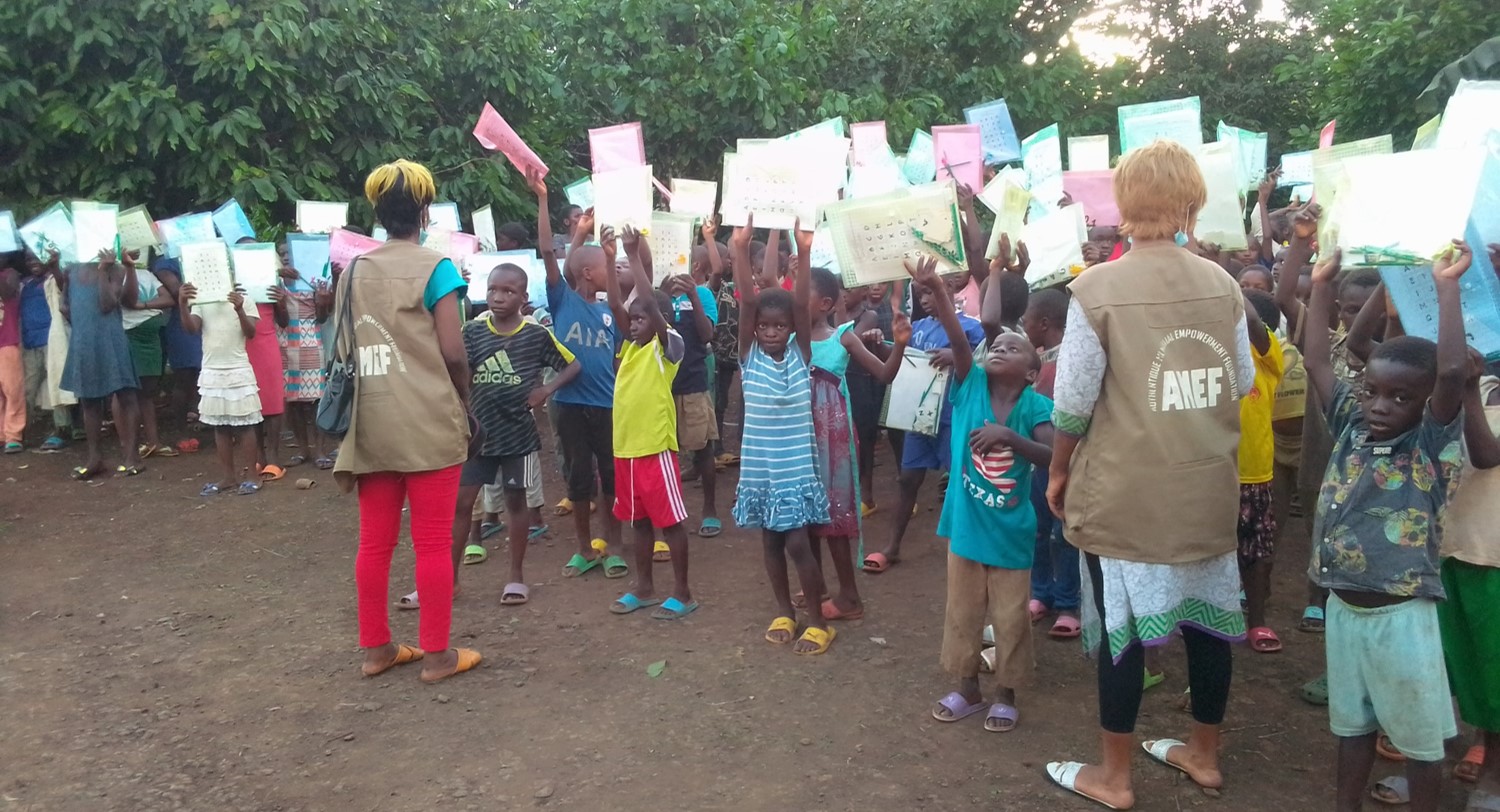
Mission
The mission of AMEF is to ensure that the rights of children and other vulnerable groups are protected, to support the development of children and youth, and to empower women through formal and non-formal education, while improving the socio-economic wellbeing of local communities through a participatory approach.
Life Challenges of the Women Served
Cameroon has been included on the Norwegian Refugee Council (NRC)’s list of the 10 most neglected conflicts in the world since 2019, due to an ongoing crisis on multiple fronts, combined with a lack of interest from international media or philanthropy. A humanitarian crisis has been ongoing in the country’s Anglophone North-West and South-West (NWSW) regions since conflict erupted in 2016 between secessionist groups and government armed forces. Civilians have borne the brunt of this conflict, and children in particular have been affected by the forced closures of over 90 percent of schools in the region.
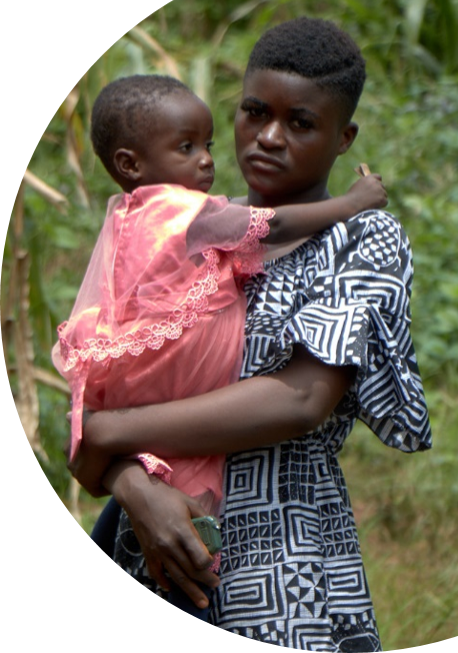 Without education opportunities and often displaced from their homes and communities, exposure of young women to protection risks such as exploitation, abuse, early marriage, and child pregnancy has increased – 4,000 cases of rape and/or coerced sex at the hands of soldiers and armed group members were reported in 2020 alone. Coerced associations with armed groups have left many adolescents pregnant or with children, and lack of livelihood opportunities compounded by stigma leaves these young women unable to care for their children and at high risk of further exploitation. These pressures are compounded by COVID-19, which has worsened the economy and destroyed livelihoods in a country already ranked low on the United Nations Human Development Index (HDI) (153 out of 189 countries).
Without education opportunities and often displaced from their homes and communities, exposure of young women to protection risks such as exploitation, abuse, early marriage, and child pregnancy has increased – 4,000 cases of rape and/or coerced sex at the hands of soldiers and armed group members were reported in 2020 alone. Coerced associations with armed groups have left many adolescents pregnant or with children, and lack of livelihood opportunities compounded by stigma leaves these young women unable to care for their children and at high risk of further exploitation. These pressures are compounded by COVID-19, which has worsened the economy and destroyed livelihoods in a country already ranked low on the United Nations Human Development Index (HDI) (153 out of 189 countries).
AMEF is concerned about the disproportionate impact that these challenges have on vulnerable adolescent young women, ages 15 – 18, in NWSW Cameroon. Living in extreme poverty, they are out of school due to conflict and the COVID-19 pandemic, isolated by displacement, and traumatized by violence. Girls who have been internally displaced and are unaccompanied by a caregiver are often forced to rely on prostitution and survival sex for food, and many families turn to early marriage of their girl children to ease financial pressures. Many young women have experienced sexual violence at the hands of armed groups, leading to high levels of teenage pregnancy. Once pregnant, returning to school becomes even more difficult, and therefore opportunities for accessing any kind of livelihood that generates income beyond subsistence levels become very low. Stigma of association with armed groups can isolate these young women and their children, leaving them trapped in a cycle of poverty.
In the NWSW region, 855,000 children are out of school. Girls are the worst affected, with literacy levels of just 59 percent. According to the Office of the Coordination of Humanitarian Affairs (OCHA), the consequences of lower educational levels in the NWSW regions will take generations to resolve, and this will disproportionately affect women. The country already has a low gender equality ranking according to the Gender Development Index (GDI), and more than half of all women live in poverty (52 percent) compared with a country average of 39 percent. Eight-out-of-ten women are underemployed.
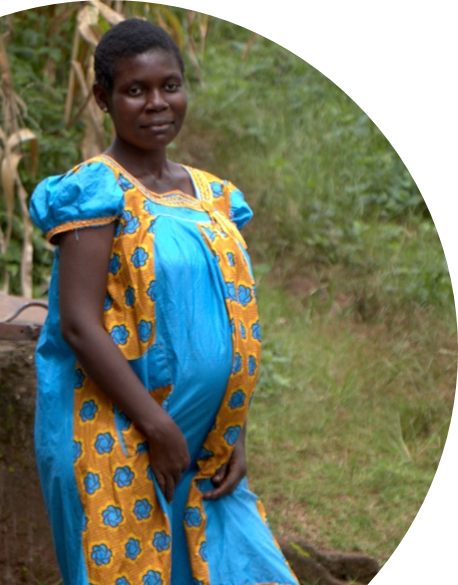 Sexual and gender-based violence affected an estimated 85 percent of women and girls in Cameroon’s conflict regions in 2020. In 2017, 500 women and girls were provided with gender-based violence (GBV) services, but OCHA estimates the true number of GBV survivors in NWSW to be much higher, citing significant under-reporting due to a perceived lack of support available and the risk of stigmatization. Twenty-eight percent of GBV cases supported by humanitarian actions in 2020 were under age 18. There are also high levels of teen pregnancy – 11 percent of girls between the ages of 15 and 19 have at least one child – which limit affected girls’ chances of economic recovery and independence. Exposure to violence and abuse also leads to long-term impacts on mental wellbeing, including symptoms of trauma, which in turn will also affect women’s ability to attain and sustain a livelihood.
Sexual and gender-based violence affected an estimated 85 percent of women and girls in Cameroon’s conflict regions in 2020. In 2017, 500 women and girls were provided with gender-based violence (GBV) services, but OCHA estimates the true number of GBV survivors in NWSW to be much higher, citing significant under-reporting due to a perceived lack of support available and the risk of stigmatization. Twenty-eight percent of GBV cases supported by humanitarian actions in 2020 were under age 18. There are also high levels of teen pregnancy – 11 percent of girls between the ages of 15 and 19 have at least one child – which limit affected girls’ chances of economic recovery and independence. Exposure to violence and abuse also leads to long-term impacts on mental wellbeing, including symptoms of trauma, which in turn will also affect women’s ability to attain and sustain a livelihood.
The Project
AMEF’s primary focus beneficiaries are vulnerable girls and women of all ages affected by the ongoing conflict in Cameroon’s NWSW region. These girls and women have often been displaced as a result of the conflict, losing access to their traditional household sources of income and to traditional community support structures. Many have witnessed or been victims of violence and face psychosocial distress and trauma as a result. The conflict has significantly limited access to basic services, including education, further limiting their opportunities, and increasing the risk of abuse and exploitation, especially for adolescent girls and single mothers.
Through this project, AMEF aims to change the landscape for the most vulnerable young women by empowering them to live a safer, more resilient, and more economically secure life. The project’s goal is to provide 120 conflict-affected, out-of-school young mothers and pregnant girls with access to education, livelihood opportunities, and psychosocial support. The project will provide these young women with a clear pathway to economic security, community participation (including decision-making), and improved capacity to care for themselves and their children.
The project aims to create change in the girls’ lives that is both immediate and long-lasting. On completion of the accelerated learning, these young women will have access to a skill that is also a fundamental human right – the ability to read and write. In this low-resource, conflict-affected environment, literacy empowers vulnerable populations to access, analyze, and act upon information that is critical for their survival and ability to thrive, including the ability to participate in community decision-making, access job opportunities, read a balance sheet, access relief services, and avoid danger. AMEF expects 80 percent of the girls to attain foundational literacy and numeracy competencies by the end of the accelerated learning component.
Vocational and business training will empower the young women to be successful in income-generation, leading to increased ability to support themselves and their children with better housing, nutrition, and education. This will immediately reduce poverty and risks of exploitation, and also disrupt potential for inter-generational cycles of poverty. Eighty-five percent of girls will have improved income-generating capacity following the vocational training and provision of start-up kits.
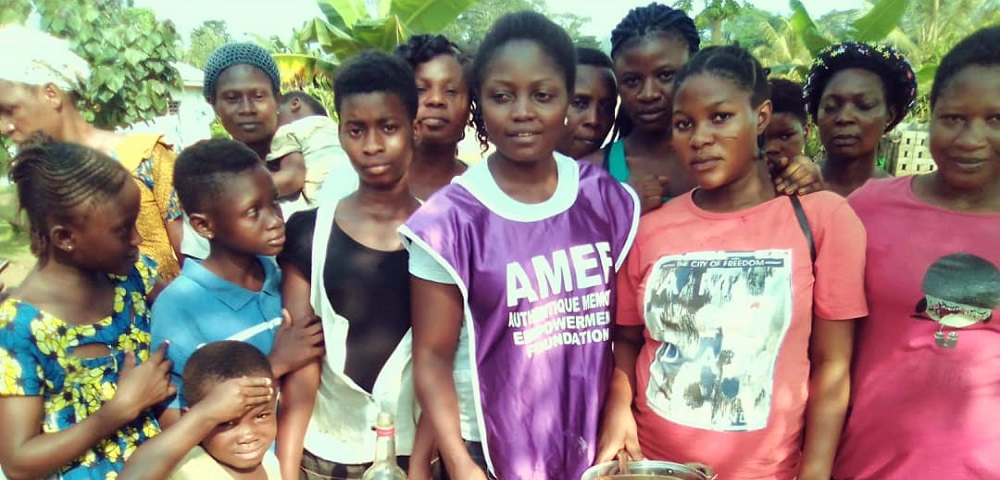
Adolescent clubs and the provision of psychosocial support will improve mental wellbeing and resilience of these girls, empowering them to overcome the negative effects of conflict, displacement, and stigma. Life skills learning will support this, by increasing their confidence and understanding of their role within the community, and by boosting practical skills such as sexual and reproductive health knowledge and parenting skills, which in turn will have a positive impact on the next generation. By project end, AMEF expects 80 percent of the girls to report improved wellbeing including feelings of control over their own lives, happiness, and feeling of safety.
Community advocacy will enable girls experiencing stigma and isolation because of pregnancy, sexual violence, and/or association with armed groups to reintegrate to their communities, improving safety for them and their children. Work with male and female community leaders on girls’ rights and how to prevent and respond to exploitation or violence will reduce the risks of exploitation, violence, and stigmatization for all girls in the community.
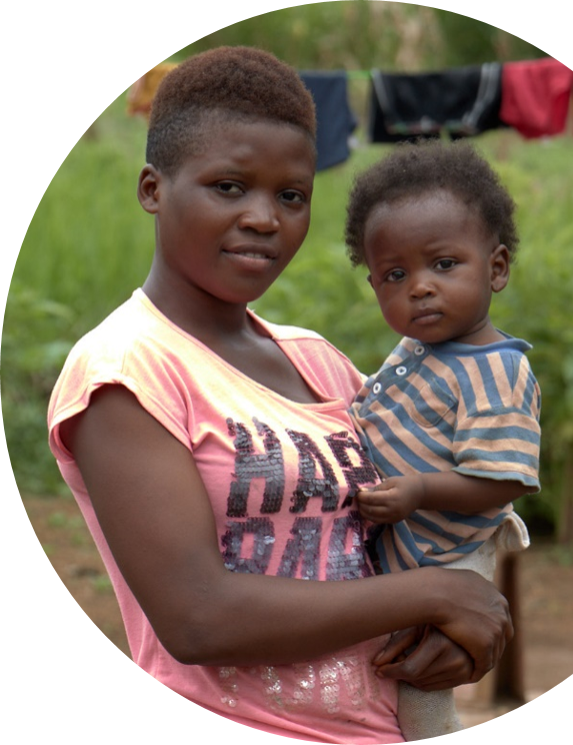 The project will directly serve 120 young women ages 15 – 18 who are pregnant or already have a child, and who have been identified as the most vulnerable by AMEF’s on-the-ground community staff. AMEF will focus on girls living in urban and peri-urban communities in Meme division, where thousands of internally displaced people reside, as these communities are relatively safe and see less fighting than surrounding villages.
The project will directly serve 120 young women ages 15 – 18 who are pregnant or already have a child, and who have been identified as the most vulnerable by AMEF’s on-the-ground community staff. AMEF will focus on girls living in urban and peri-urban communities in Meme division, where thousands of internally displaced people reside, as these communities are relatively safe and see less fighting than surrounding villages.
The project will indirectly serve 480 children and family members of the supported girls by improving the education and livelihood opportunities for the 120 project participants, which will lead to better nutrition, greater economic security, and ultimately, education for their children and household members. Children will benefit from their mothers’ improved parenting skills and from improved attitudes within the community towards women’s education and sexual autonomy. Changing men’s attitudes and behavior towards women’s educational capabilities and right to a life free from violence will impact the lives of women and girls going forward. The project will also serve 900 women, men, and boys with advocacy around their attitudes towards women and girls and knowledge on how to prevent and respond to exploitation, abuse, or stigmatization of vulnerable young women in their communities.
Direct Impact: 120; Indirect Impact: 1,380
UN Sustainable Development Goals
![]()
![]()
![]()
![]()
Questions for Discussion
- With a multi-pronged approach to creating a path to a more secure future, how do you think each aspect of this project strengthens the others?
- Given the extent of trauma experienced by the adolescent girls in the NWSW regions, will this intervention be adequate or do you believe there should be more sustained interventions? Do you think young people are more resilient?
- How do you think addressing the stigma of association with armed groups (albeit involuntarily) can impact the larger community?
How the Grant Will be Used
Together Women Rise’s grant of $49,891 will help fund the following:
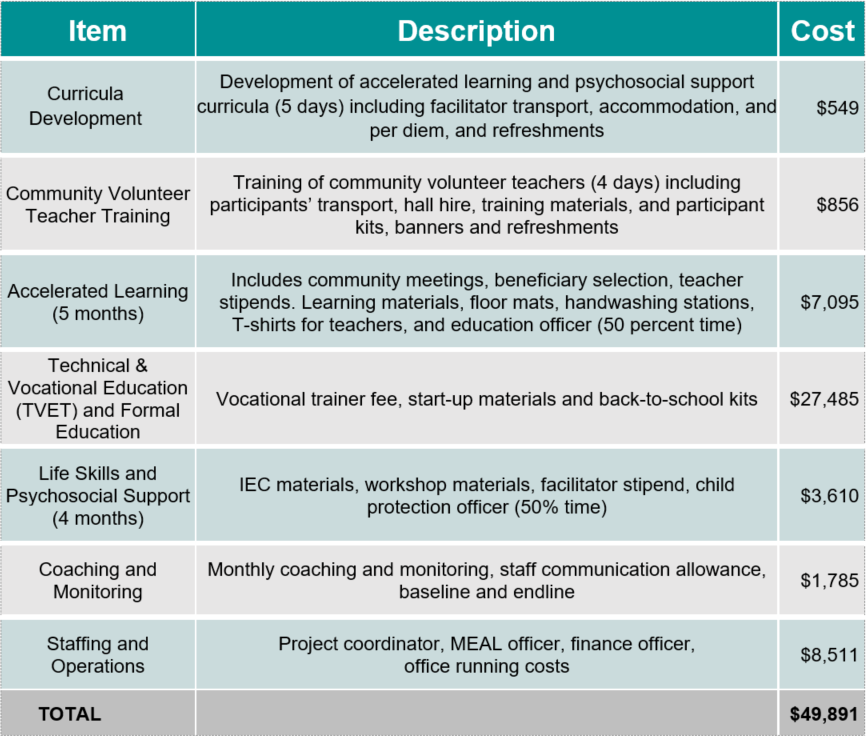
Why We Love This Project/Organization
The impact of harmful gender norms and cultural practices has increased the vulnerability of internally displaced, adolescent girls in the Anglophone area of Cameroon. Access to education, livelihood opportunities, and psychosocial support provide a path to economic security, community participation, and improved capacity to care for themselves and their children.
Evidence of Success
AMEF projects have resulted in positive impacts in the communities they served, including: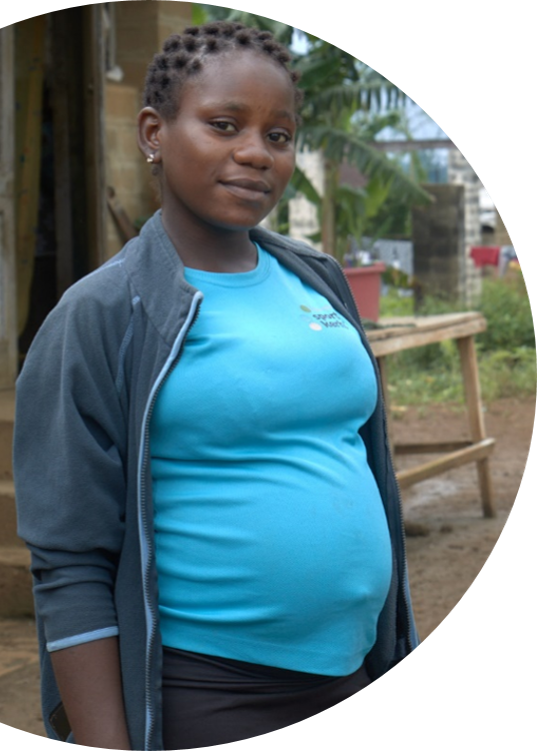
- The provision of economic empowerment and livelihoods support to 200 vulnerable women and girls, including 75 GBV survivors, resulted in improved income-generating capacity and ability to provide for themselves and their families. One beneficiary, a woman living with disabilities who was trained on pastry-making and provided with materials to start a small baking shop, became financially stable as a result of the support provided and has since opened up a second small business to further increase her income – enabling her to meet the needs of her family and improving her independence and dignity.
- The provision of foundational literacy and numeracy to 907 conflict-affected and displaced children who have no access to school, was achieved through training volunteer teachers to lead classes in community spaces. In just two months, 81 percent of the children supported demonstrated improvement in literacy skills, and 67 percent demonstrated improvement in numeracy skills. One community leader called the non-formal learning opportunities provided by AMEF “life changing for our children.”
- Emergency food assistance and non-food items were distributed to 28,000 conflict-affected and displaced people in Meme and Manyu divisions.
- The protection and dignity of 5,000 vulnerable women and adolescent girls was improved through awareness-raising sessions on protection and human rights, and distribution of dignity kits to 1,500 women and girls.
Voices of the Girls
“Life does not always go as planned, sometimes it’s unfair, but the struggles of today make us stronger for tomorrow.” – Priscila
“I am determined to break the curse of poverty in my family. My children deserve a better life where their needs are catered for.” – Bertha
(English Translation) “I want to be educated and become a doctor. That way I will help many sick people in my community.” – Mokube
“Having a mother who has the ability to provide basic needs, guarantees a better future for her children.” – Geraldine
About the Organization
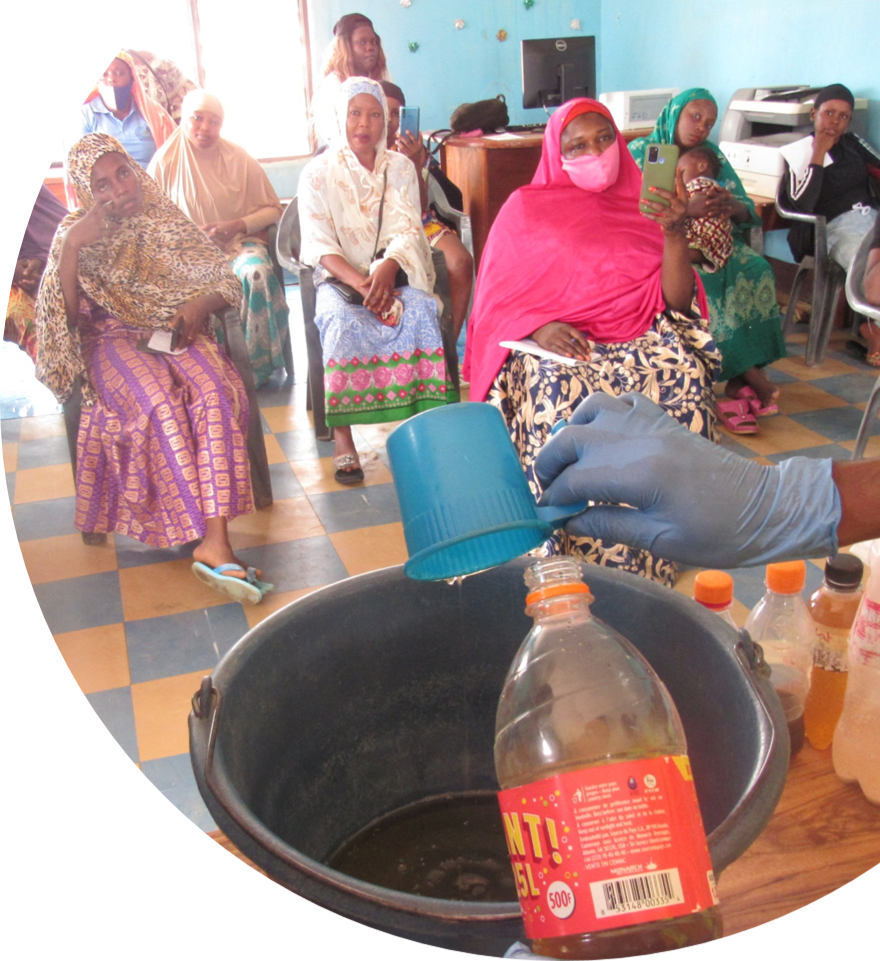 Authentique Memorial Empowerment Foundation (AMEF) was conceived in 2006 by Dr. Margaret Niger-Thomas Agbaw, a social anthropologist and gender expert. She saw the prevalence of early and forced marriages among girls and women in rural areas of SW Cameroon – including the “money woman” phenomenon where young girls are married to much older men. Initially a working group bringing together experts in different fields, AMEF’s focus was to empower single mothers economically to allow them to meet the costs of education for their children, reducing the risk of early marriage for the children. Over time, the members began to take a more holistic approach to empowering women and girls and challenging harmful gender norms, expanding the range of services offered and formalizing the organizational structure.
Authentique Memorial Empowerment Foundation (AMEF) was conceived in 2006 by Dr. Margaret Niger-Thomas Agbaw, a social anthropologist and gender expert. She saw the prevalence of early and forced marriages among girls and women in rural areas of SW Cameroon – including the “money woman” phenomenon where young girls are married to much older men. Initially a working group bringing together experts in different fields, AMEF’s focus was to empower single mothers economically to allow them to meet the costs of education for their children, reducing the risk of early marriage for the children. Over time, the members began to take a more holistic approach to empowering women and girls and challenging harmful gender norms, expanding the range of services offered and formalizing the organizational structure.
AMEF was officially established and registered in February 2014. When conflict broke out in 2016/2017, AMEF re-oriented their operations to be able to meet the emerging needs of displaced populations, providing emergency education, child protection, health, livelihoods, and water, sanitation, and hygiene support (WASH) support, while continuing to focus on the needs of the girls and women who are most affected by this crisis.
AMEF provides services in four main departments:
- Education and Child Protection services, which provide formal and non-formal learning, entrepreneurship skills development, and psychosocial support to conflict-affected and out-of-school children.
- Economic Development and Livelihood services, which provide income generation support to vulnerable households, integrating climate smart-agriculture approaches and entrepreneurship skills development.
- Protection services, including support for survivors of gender-based violence (GBV), peacebuilding activities, and human rights advocacy activities.
- Health, Nutrition, and WASH, such as hygiene promotion for disease prevention, malnutrition screening, and raising sexual and reproductive health (SRH) awareness.
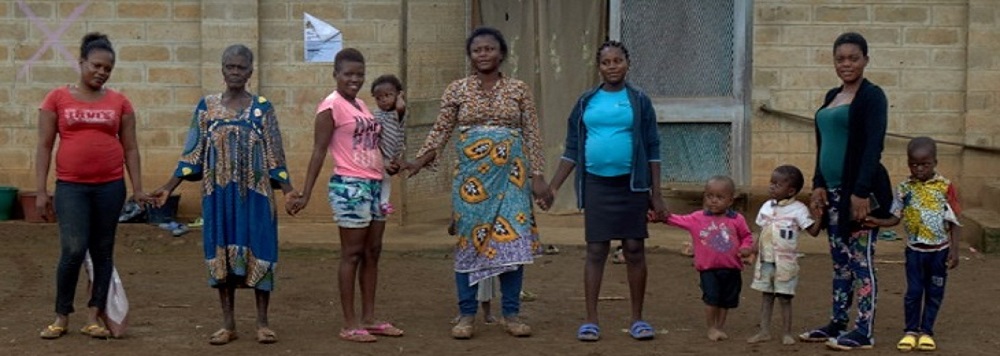
Where They Work
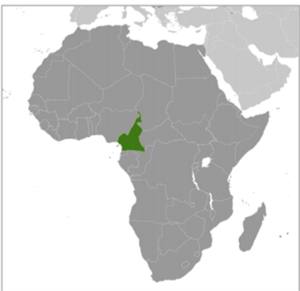
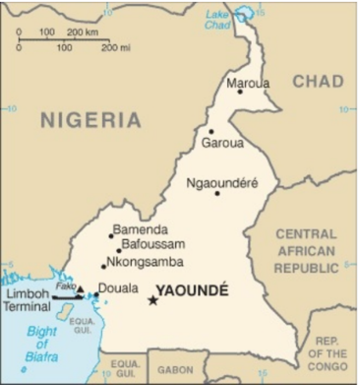
Cameroon is located in Central Africa, bordering the Bight of Biafra, between Equatorial Guinea and Nigeria. Mount Cameroon, the highest mountain in Sub-Saharan west Africa, is an active volcano.
Cameroon’s population is 29.3 million (2022 est.). It has a large youth population, with more than 60 percent of the populace under the age of 25. Fertility is falling but remains at a high level, especially among poor, rural, and uneducated women, in part because of inadequate access to contraception.
The percentage of women married by age 15 is 10.7 percent; 29.8 percent are married by age 18. Three percent of men are married by age 18.
Cameroon, particularly the northern region, is vulnerable to food insecurity largely because of government mismanagement, corruption, high production costs, inadequate infrastructure, and natural disasters. Despite economic growth in some regions, poverty is on the rise, and is most prevalent in rural areas, which are especially affected by a shortage of jobs, declining incomes, poor school and health care infrastructure, and a lack of clean water and sanitation. Underinvestment in social safety nets and ineffective public financial management also contribute to Cameroon’s high rate of poverty. The activities of Boko Haram, other armed groups, and counterinsurgency operations have worsened food insecurity in the Far North region.
 Internal and external displacement have grown dramatically in recent years. Boko Haram’s attacks and counterattacks by government forces in the Far North since 2014 have increased the number of internally displaced people. Armed conflict between separatists and Cameroon’s military in the Northwest and Southwest since 2016 have displaced hundreds of thousands of the country’s Anglophone minority.
Internal and external displacement have grown dramatically in recent years. Boko Haram’s attacks and counterattacks by government forces in the Far North since 2014 have increased the number of internally displaced people. Armed conflict between separatists and Cameroon’s military in the Northwest and Southwest since 2016 have displaced hundreds of thousands of the country’s Anglophone minority.
Environment issues include prevalent waterborne diseases; deforestation and overgrazing resulting in erosion, desertification, and reduced quality of pastureland; poaching; overfishing, and overhunting.
- Birth rate: 35.53 births/1,000 population (2022 est.)
- Mother’s mean age at first birth: 20.1 years (2018 est.)
- Maternal mortality ratio: 529 deaths/100,000 live births (2017 est.)
- Infant mortality rate total: 73 deaths/1,000 live births
- Life expectancy at birth total population: 27 years
- Total fertility rate: 4.55 children born/woman (2022 est.)
- Literacy rate: male, 82.6 percent; female, 71.6 percent (2018)
A closer look at the lasting effect of societal conflict on women
As the crisis in the Anglophone and in the Far North regions in Cameroon has continued unabated, armed groups and government forces continue to commit human rights abuses. Humanitarian access is severely restricted and humanitarian workers have been victims of attacks by both government forces and separatist groups. Over 6,000 people have been killed and nearly one million people have been displaced. Sadly, this conflict has been ignored by the vast majority of foreign policy experts. There are no real formal efforts from governments to re-integrate these populations.
In Cameroon, as in all conflicts and situations of instability, pre-existing patterns of discrimination against women and girls are exacerbated, exposing them to heightened risks of violation of their human rights. Conflict can result in higher levels of GBV against women and girls, including arbitrary killings, torture, sexual violence, and forced marriage. Women and girls are primarily and increasingly targeted by the use of sexual violence, including as a tactic of war.

GBV also spikes in post-conflict societies, due to the general break down of the rule of law, the availability of small arms, the breakdown of social and family structures, and the “normalization” of GBV as an additional element of pre-existing discrimination. Trafficking is also exacerbated during and after conflict, due to the breakdown of political, economic, and social structures, high levels of violence, and increased militarism.
More than 36 percent of children who are out of school globally live in war-affected countries. Adolescent girls in conflict zones are 90 percent more likely to be out of school when compared to girls in other, conflict-free, countries. Girls are often kept out of school due to concerns about safety. Women and girls face heightened risks due to displacement and the breakdown of normal protection structures and support. They also face increased care-related tasks such as providing food and water and caring for the sick.
The trauma experienced in conflict situations does not just disappear once the conflict is over. It can often manifest over the second and third generations of families in collective fears, affecting the efforts of marginalized girls to break away from passed-down beliefs, and can divide societies with parallel realities and parallel narratives.
Source Materials
Foreign Policy Research Institute
